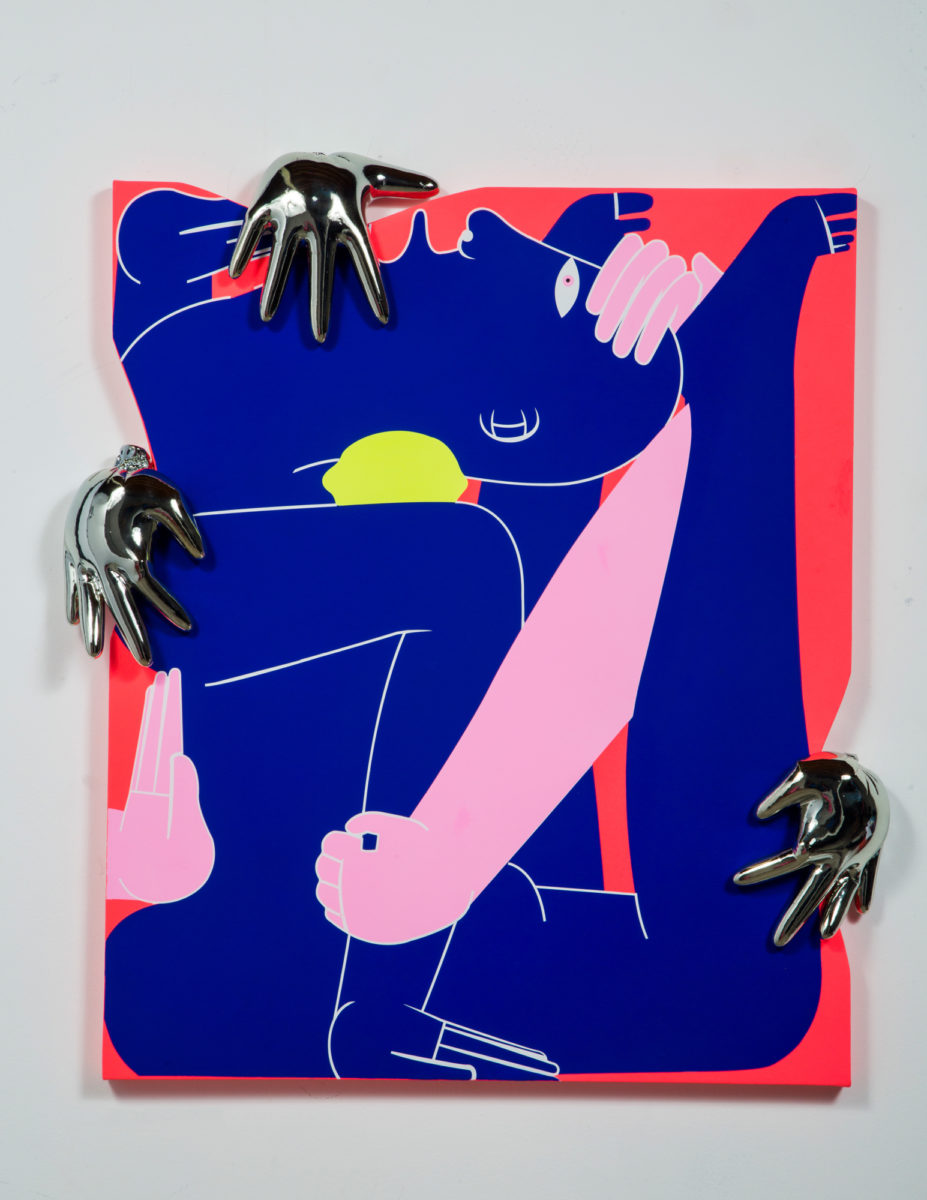
In Katja Novitskova‘s recent, massive installation, “Invasion Curves,” the artist offers an environment with creatures taken straight out of nature and the laboratory. The recent exhibition at Whitechapel Gallery offered a fictional landscape facing a “biotic crisis” (or a period of mass extinction), “where imaging and technology are used in a process of mapping the exploitation of life,” the gallery says.




“Images captured by scanners, cameras and satellites – from the bodies of lab organisms to the flows generated by image processing algorithms – are rendered as vivid sculptures, and projections,” a statement says. “Worms defy gravity and genetically modified life forms hatch from eggs among a tangled undergrowth of cables. At the heart of the exhibition, modified baby rockers gyrate eerily.”
See more work from the artist below.






 Blending two- and three-dimensional forms, Mark Whalen creates cerebral and absurd arrangements of the human body. Whether stacking vibrant heads or using sculpted hands to sculpt the very shapes of canvases, there’s a metatextual component in tackling the act of creating art itself.
Blending two- and three-dimensional forms, Mark Whalen creates cerebral and absurd arrangements of the human body. Whether stacking vibrant heads or using sculpted hands to sculpt the very shapes of canvases, there’s a metatextual component in tackling the act of creating art itself. An avid enthusiast of mythology and cartography, Toronto-based artist
An avid enthusiast of mythology and cartography, Toronto-based artist  Animals take on a special meaning in San Francisco based artist
Animals take on a special meaning in San Francisco based artist